While the Okavango Delta tops many bucket-lists, Botswana has a range of other wilderness areas to explore. Tessa Reed rounds up a few other areas to include in an itinerary.
1. Chobe National Park
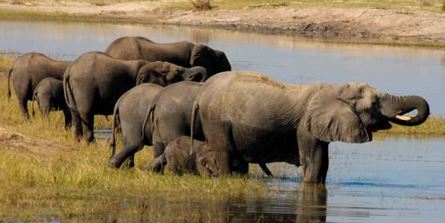
Both Anna Neville, Marketing Manager at Sanctuary Retreats, and Chris Anagnostellis of An African Anthology, recommend Chobe National Park in Botswana as a must-visit to see the largest population of elephants. “Chobe National Park also has one of the greatest concentrations of game found anywhere in Africa,” says Neville, adding that the park offers a varied safari experience for guests, combining land and water-based activities. Other than a traditional game drive, activities on offer include fishing excursions, boating excursions and sundowner cruises along the Chobe River. “Taking a boat safari along the Chobe River is the best way to see the area and enjoy incredible, year-round sightings,” says Neville, adding that guests at Sanctuary Chobe Chilwero can enjoy 360-degree views on board the lodge’s tailor-made photographic boat featuring 360-degree swivel seats.
Anagnostellis points out that the Chobe is very accessible, with daily flights to Kasane. The area can also be combined with Victoria Falls, which is only an hour away.
2. The Linyanti
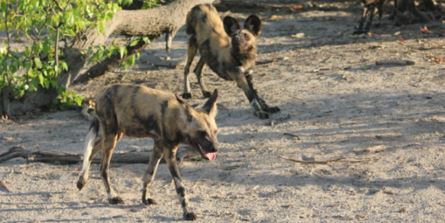
The Linyanti area offers some of the best game viewing in Botswana, some suggesting it is the best areas to spot predators. The area lies along the Linyanti fault line, and is characterised by dry grasslands and woodlands and abundant wildlife, including a large elephant population and a high number of endangered wild dog. Other animals include leopard, lion, Red lechwe, hippo, crocodile, sable and roan. The Linyanti River also offers the possibility of boat activities, including sunset cruises.
Private concessions in the Linyati offer more remote and private safaris than the busier national parks.
3. The Kalahari
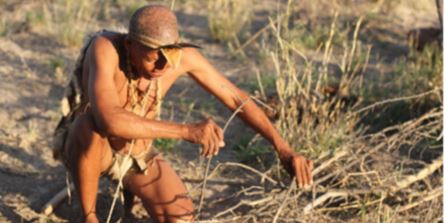
A Bushman shows guests how to make fire at Wilderness Safaris' Kalahari Plains Camp.
The Kalahari is a unique destination characterised by dramatic landscapes and deafening silence, says Anagnostellis. He recommends the destination for highlights including experiencing San culture and the possibility of seeing Black-maned lions.
Storm Napier, Southern Africa Sales Manager for Footsteps in Africa, recommends Deception Valley Lodge. “Being situated on a private reserve on the northern border of the Central Kalahari Game Reserve allows more flexibility to be able to walk in this area and experience a night drive.” She says the lodge also offers guests great opportunities to see the Black-maned Kalahari lions.
4. Tsodilo Hills
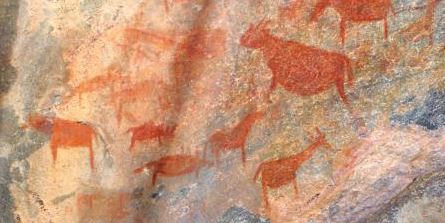
Tsodilo Hills, consisting of four large pieces of rock that rise unexpectedly from the dry desert, add uniqueness to a Botswana itinerary, says Renier Friis, General Manager: Product Development & Contracting at Welcome Tourism Services, a division of Tourvest Destination Management. “Bushmen who lived here referred to the bigger rock as the 'male', the smaller one was known as the 'female', and the smallest one was the 'child'.” He explains that, according to legends, the fourth hill was the male hill's first wife, who now prowls in the background, after being left for a younger woman. “Tsodilo Hills forms one of the most historically significant rock art sites in the world,” he says. “It boasts 500 individual sites representing thousands of years of human habitation.” He adds that it has some rock paintings that are more than 20 000 years old.
5. The Makgadikgadi Pan
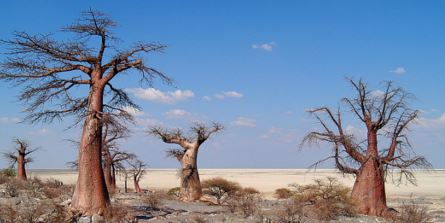
The Makgadikgadi Pan is one of the largest salt pans in the world and is situated in north-eastern Botswana. The pan was formed thousands of years ago when the Lake Makgadikgadi dried up. During most of the year, the pans are dry, although seasonally they are covered with water and grass and then become inhabited by migrating animals, including wildebeest and zebra together with the predators that hunt them. During the wet season, migratory birds including ducks, geese and Great White pelicans can be spotted, while the pan is also home to one of only two breeding populations of greater flamingos in Southern Africa.























